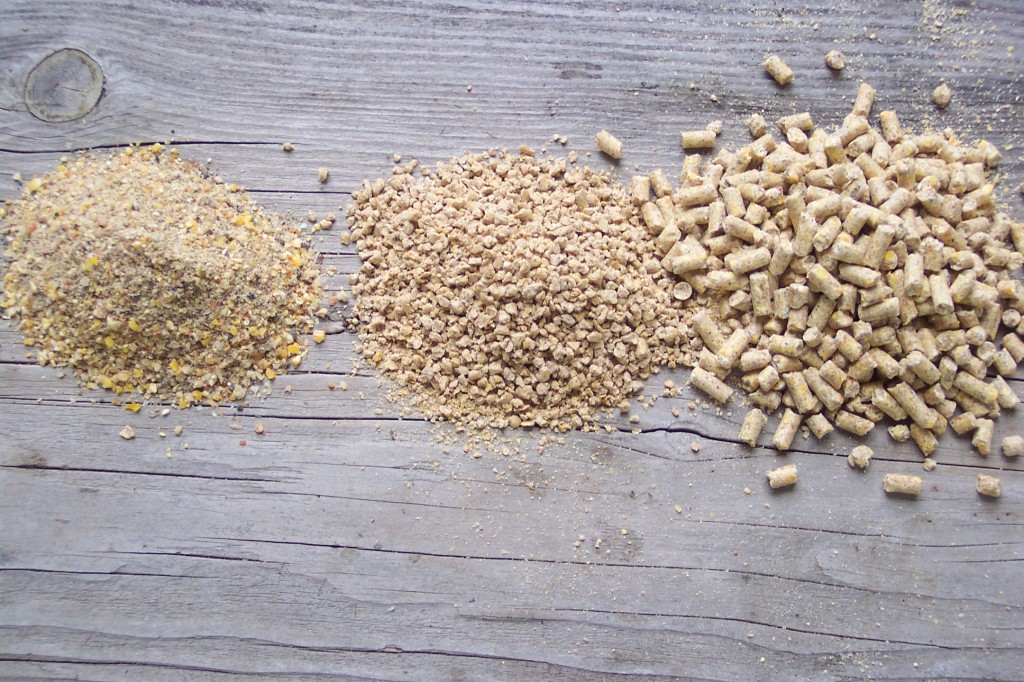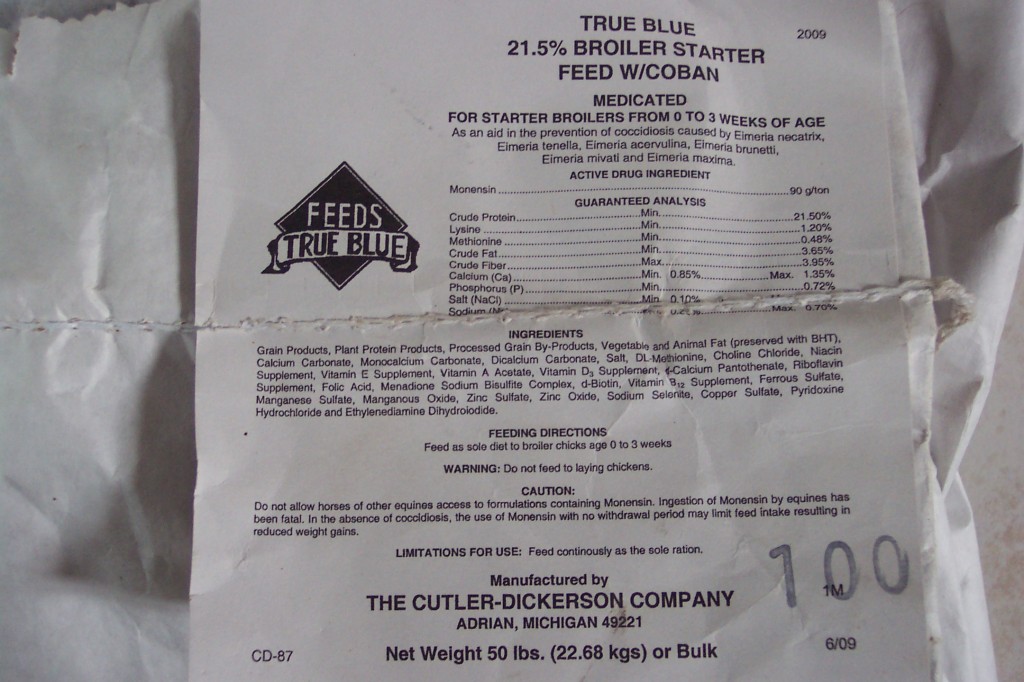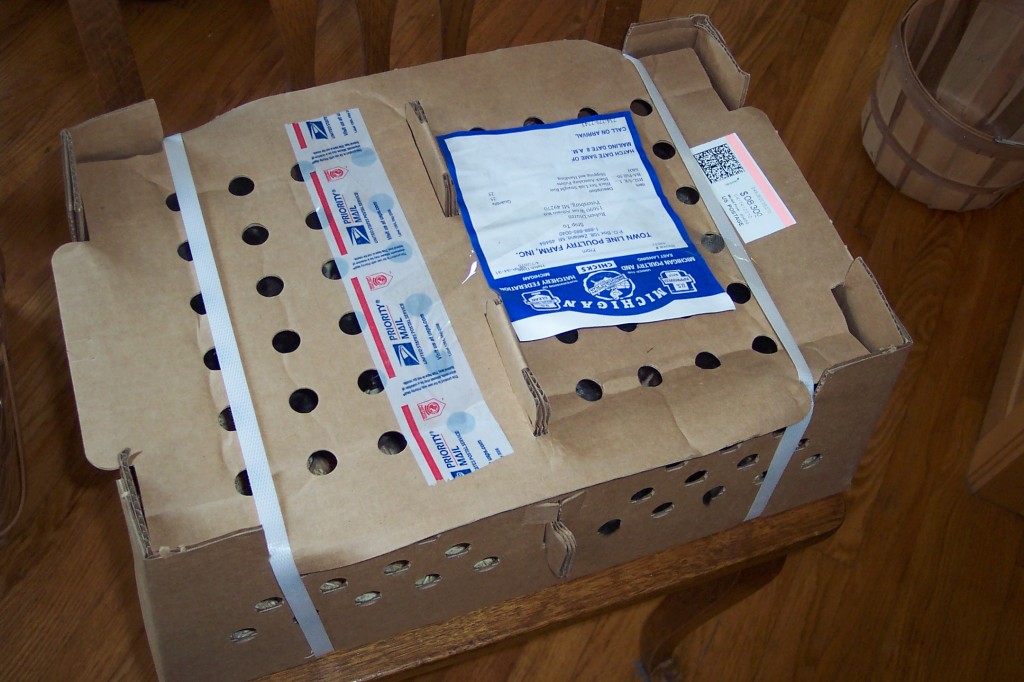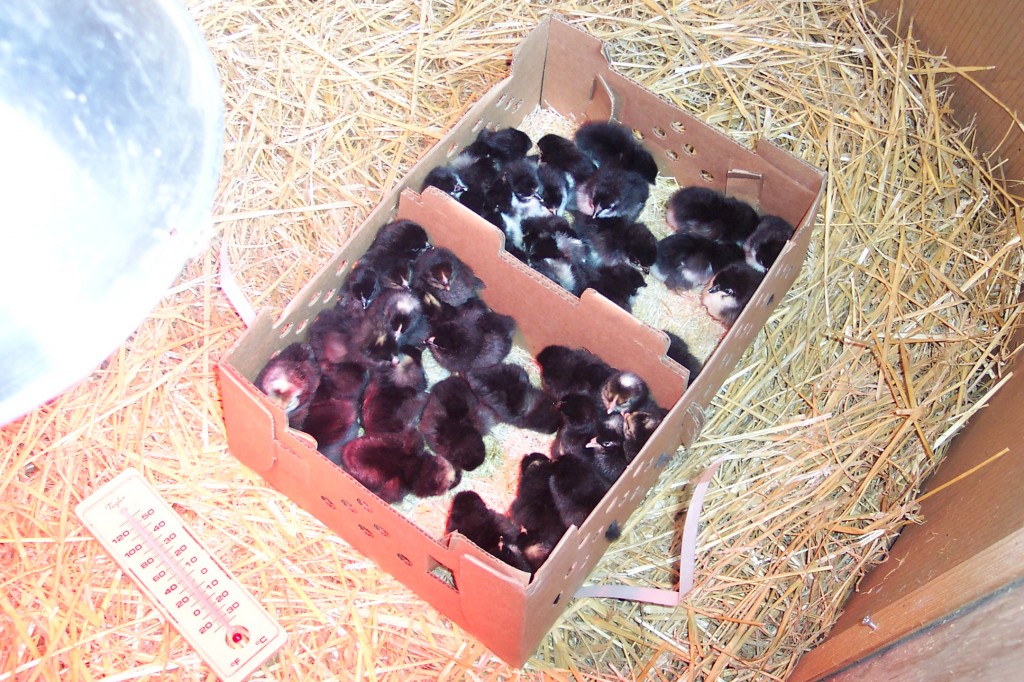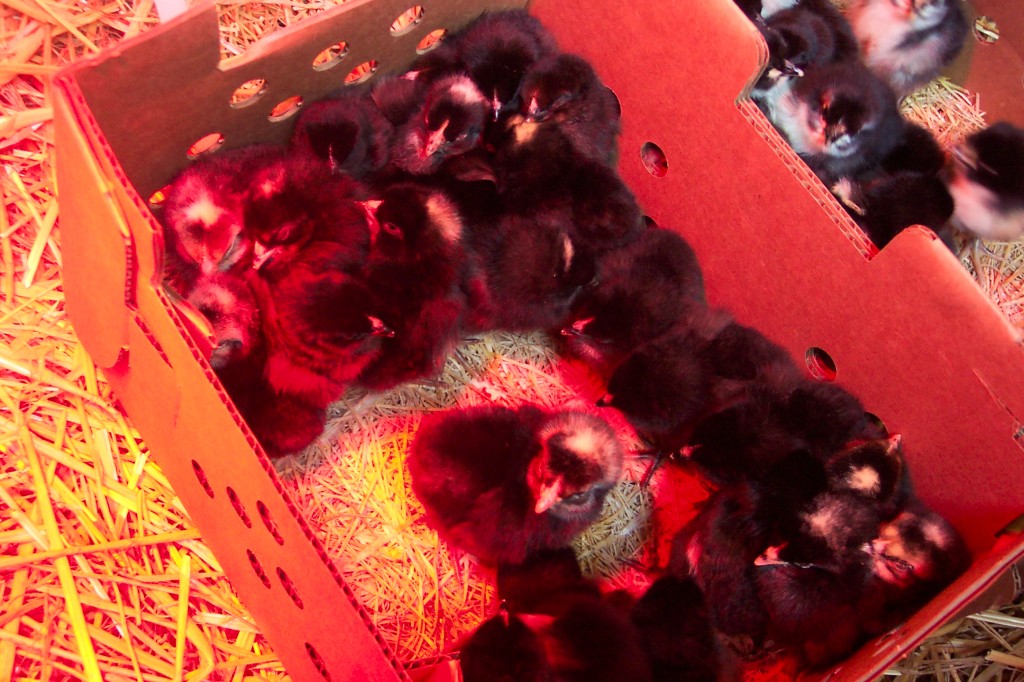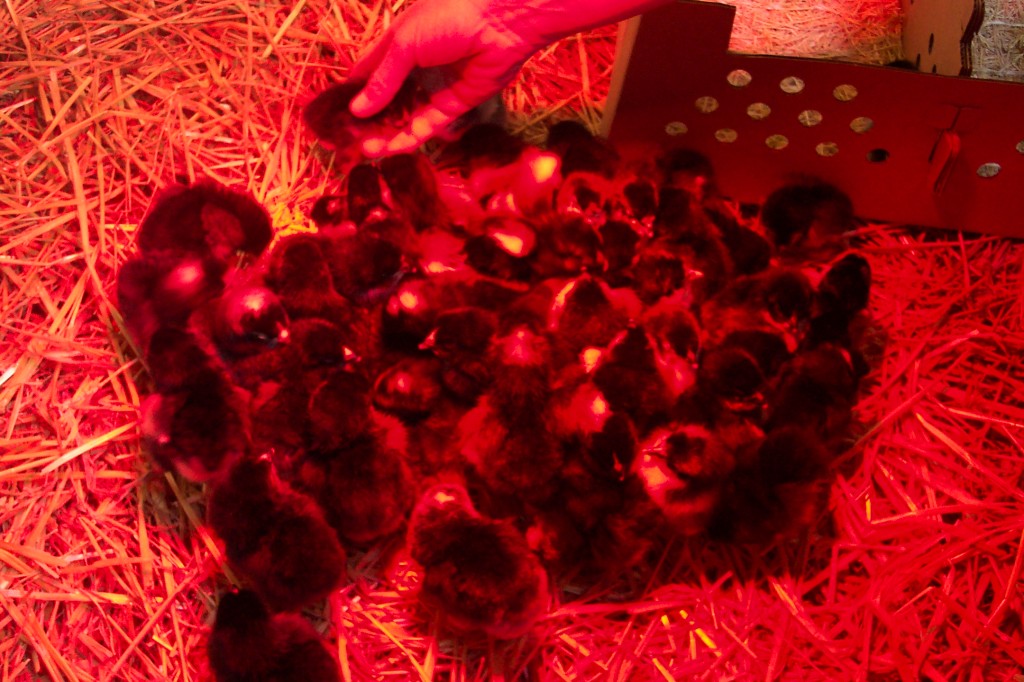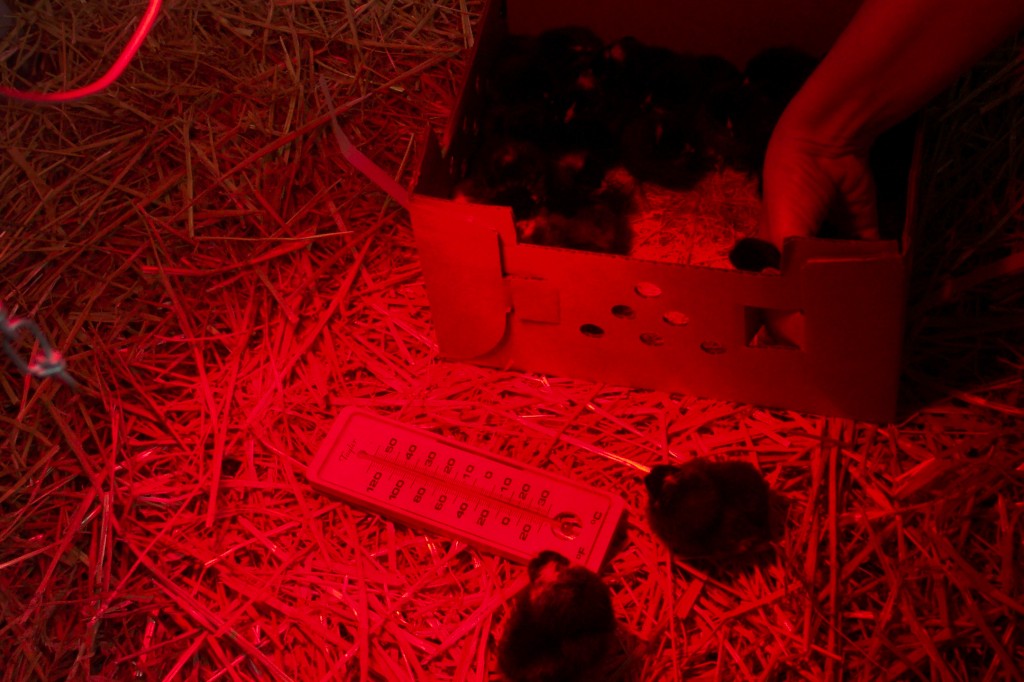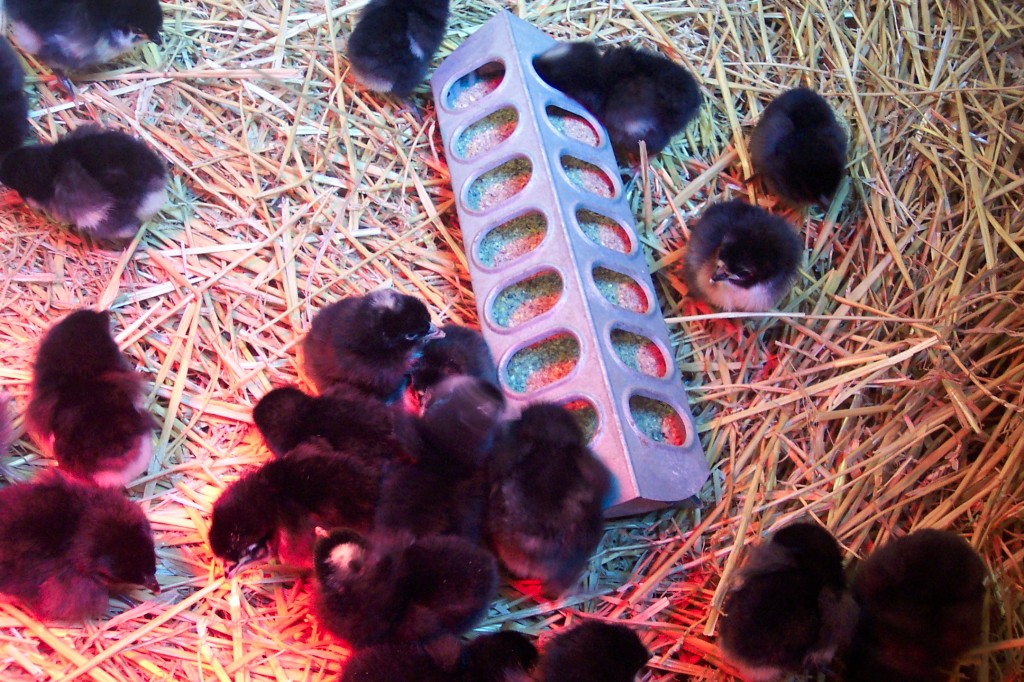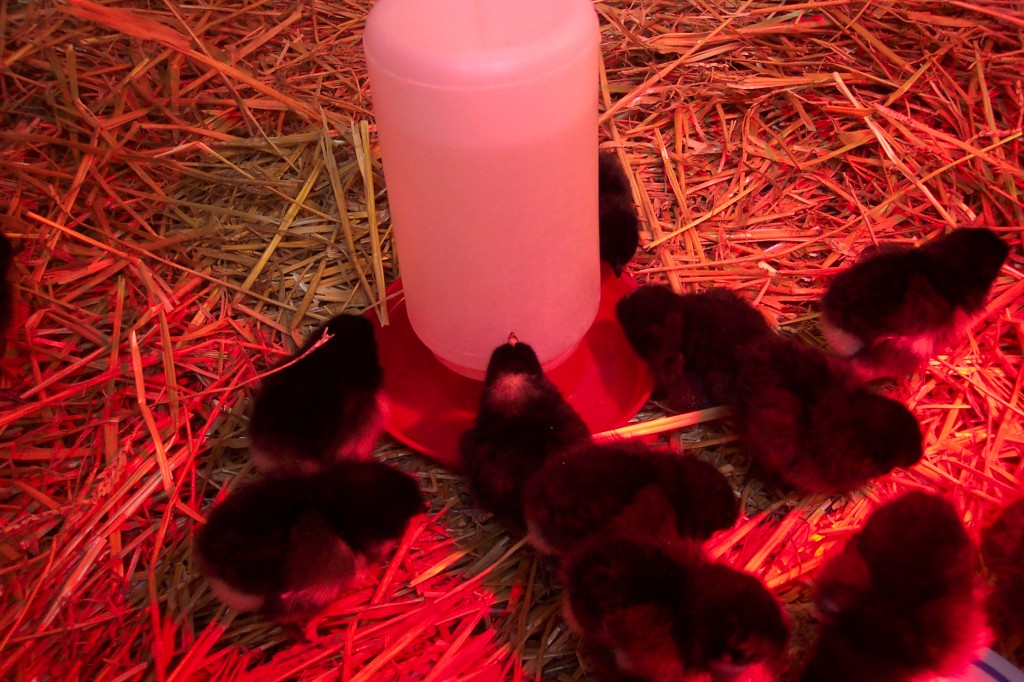Last post I promised I would discuss chicken feed. My intent is to cover commercially available pre-mixed feed. Mixing your own feed is a different topic.
The photo above shows three forms of commonly available pre-mixed feed. On the left is a fine grind or “mash” which has ingredients mixed together but each ingredient remains separate. This is the easiest form of feed for very young chicks to eat.
In the middle of the photo we see the “crumbles”. In this form the ingredients are finely ground then mixed and compressed into small nuggets, resembling Grape Nuts cereal. The advantage to this form of feed is that in theory, each tiny nugget contains some of each ingredient. The chick will not be able to pick through and choose only the tasty part of the mix.
The pelleted feed on the right is much too large for chicks to eat. The pellets are also quite hard, so that even though they will pick at it, they cannot break them into smaller pieces to swallow. Pellets are best left for older birds.
Sometimes chick starter is sold as “medicated” feed containing an ingredient to help prevent coccidiosis. Coccidiosis is a disease caused by a number of related parasites that infect the intestinal tract of the chick. This parasite often kills the bird. It is found in the soil in the chicken’s exercise area or run.
If you are raising chicks for the first time, you may not need medicated feed because the parasite population has not built up enough in your soil to do much harm. Medicated feed is only fed for three weeks to allow the medication to be eliminated from the chick’s body.
Each bag of feed by law has to have a label attached to it indicating weight, ingredients and manufacturer. Here is a typical label found on a feed bag:
Notice all of the vitamins and minerals added to the grain. This assures that the chick gets all of the nutrition it needs to grow healthy and strong. Good growth while they are young equals good egg layers later on.
Don’t be too concerned about meat or animal by products in a feed mix. Chickens are omnivores and if given the chance will eat nearly anything. Chickens left to run freely in the yard will prefer insect, worms and small animals whenever they can find them. An unnatural feed for chickens is an all grain diet, although if properly balanced, chickens can thrive on that type of diet as well.
The feed commonly called “chick starter” contains at least 20% protein and is fed until the chicks are about ten weeks old. They are then switched over to a “grower” containing 15-18% protein until they reach 18 weeks of age.
At 18 weeks, the pullets will begin to lay eggs and then must be fed a layer mix containing 16% protein and extra calcium needed by the chicken to produce egg shells.
Do not under any circumstances feed layer to growing chicks, the high amount of calcium in layer will cause abnormal bone growth in your developing chicks.
There you have a quick introduction to chick feed. I’ll discuss more about feed as the birds get older.
Bob
